Hydrangea Miscellaneous Vanilla Freisi is a decorative shrub, which at first sight conquers its incredibly luxurious major inflorescences in gentle-pink and white tones. Vanille Fraise grade hydrangea inflorescences have an unusual shape and resemble a strawberry ice cream horn with cream, which exudes fragrant fragrance. At the beginning of flowering, they have a white shade, closer to the summer become pink, and by the end of the blossom, bright pink, crimson color. In order for the beauty-hydrangea to decorate the country area and fragrant all season, it needs to provide competent care, observing the rules of its cultivation.
Hydrangea Vanilla Freisi: variety description
The variety became known to the world thanks to the painstaking work of the French gardener-breeder Eric Reno, who worked on his dismissal of about 11 years, only in 2003. Hydrangea Miscellaneous Vanille Fraise received recognition by winning prizes at the exhibition in the Netherlands.
Hydrangea Miscellaneous Vanilla Freiji is an empty fast-growing shrub with an asymmetric crown, its height reaches from 1.5 to 2 meters. Soothes are strong, elastic, bend due to major heavy inflorescences, thanks to this shrub can acquire a rounded silhouette. The leaves of the plant have an oval shape, a little rough to the touch, saturated green color, stuffed in a burgundy shade.
The decorative value of the shrub is attached to the inflorescences of the pyramidal form, the flowers of which change their color throughout the flowering season. The color of the petals changes gradually: at the beginning of flowering they are snow-white, later on the petals there appears a pale pink border, and with time the flowers are pink. By the end of the season, the flowers of inflorescences become crimson, and the top of the inflorescence remains snow-white, thanks to this shrub looks in the garden in the garden and effectively. The flowering of hydrangea is long, starts from the middle of the summer and lasts until October. In addition to attractive appearance, the grade has become popular in our region due to the frostability of the plant, as it can withstand quite low temperatures, up to 29 degrees below zero.
Hydrangea Vanilla Freiji, landing
Selection of site
For the cultivation of hydrangea, for rapid growth, continuous abundant blossom of shrubs, it is recommended to choose the illuminated spacious areas of the garden, although the hydrangea vanilla Freisi will be wonderful and in conditions of partial natural shading. However, in the shade, a shrub can be low, and its inflorescences will be much smaller than that of a plant grown in a sunny corner of the garden. The plant requires protection against strong bustovs of the wind, which can abandon his shoots. Choosing a plot, it is worth considering that the shrub in a short period of time is able to grow to 1.5- 2 meters in height and in the diameter of the crown.
Fortress preparation
In order for the spectacular bushes to please the eye and threatened the whole season, it is necessary to correctly pick up the soil to plant them, which must comply with certain requirements:
- the presence of limestone soil is not allowed;
- the plant prefers well-moistened weakly acidic soils, it must be fertile and possess a loose structure;
- organic fertilizers must be present in the soil.
To plant hydrangea seedlings in spring, the ground for their landing begin to prepare from autumn. In the case of the absence of such an opportunity, it is necessary to observe the period between the preparation of the soil and landing of seedlings, which should be at least 2-3 weeks.
Stage of the preparation of the soil for the cultivation of hydrangea:
- Making mineral and organic fertilizers in soil acidification. It is possible to increase the acidity by entering into the soil of brown peat, sawdust, spruce or pine overwhelms. It is strictly not recommended to make lime, ashes or chalk, which will lead to the deoxidation of the soil.
- Preparation of soil. Mixed in equal proportions: peat, humid, pure river sand, derm, leaf ground.
- Preparation of landing holes. The size of the pit should be about half a meter in width and depth, the distance between them is withstanding at least one meter. At the bottom of the pit, the drainage layer is stacked, consisting of small stones, rubble, gravel, broken brick or river sand, and then embanked earlier prepared soil.
Seedling seedling
By purchasing planting material in specialized stores, at exhibitions, pay attention to the shrub stems, they must be without damage and the presence of insects on them. When buying in the spring, it is worth carefully inspecting the root system of the plant. Gently remove them from the container with the soil and make sure that they are wet and do not have rot or mold. Buying a plant in summer, inspect the leaves, they must be juicy and elastic. Brown or faded leaves indicate a seedling infection by bacteriosis.
Hydrangea Vanilla Freiji - landing
Putting Hydrangea Vanilla Freisi can be as in the spring, and in summer, without waiting for autumn. For the northern regions, the spring landing is preferable.
Before the landing, the roots are recommended to be mashed in the root stimulator for 12 hours.
The hydrangea seedlock does not plunge into the ground and placed on the surface so that the root neck is at the ground level, then fall asleep soil. After planting, the seedlings are mulched by a layer of peat, needles, humus (at least 6-8 cm) and are plenty.
If you purchased seedlings in the summer, during flowering, they can be planted in an open ground, neatly, with a room of land, passing out of pot into the landing pit. Hydrangea is rapidly rooted and adapts to new conditions before the arrival of the cold. After landing, provide a plant natural shading from scoring sunlight and plenty.
Hydrangea Vanilla Freiji, Care
The hydrangea of \u200b\u200bVanilla Freisi is not demanding in care, it is enough to carry out a regular watering, soil loosening, feeding and trimming a shrub.
Watering
Hydrangea is a moisture-loving plant and needs regular abundant irrigation and spraying. The soil around the shrub must be constantly moisturized, it is impossible to allow it to dry, especially in a roast and dry summer. A shrub is watered 1-2 times a week very abundantly, spending up to 30 liters of warm, residual or rainwater, at the rate of 1 meter square land. If spring or summer was rainy, watering is significantly reduced. From excessive moisture on the roots of the plant, rotting may appear, also the mooring of the soil provokes the development of fungal diseases. To maintain the humidity of the soil, as well as provide the roots of additional food, the root circle around the bush must be mulched. The mulch is used peat, sawdust, spruce needles, an exemplary layer from 10 to 15 cm. It is recommended to carry out periodic loosening of the soil around the bush, this event will eliminate the weed herb and enrich the soil with oxygen.
Podchar
Hydrangea Miscellaneous Vanilla Freii in the first year after landing does not need feeding fertilizers, since all substances needed for its growth and development were entered into the soil in front of the soil.
The first feeding is carried out in the second year of the life of the plant, in April, mineral components are used: ammonia and potash nitrate, as well as superphosphate. The second feeding is necessary during the bootonization period to stimulate the formation of a luxurious crown and long abundant blossom of shrub.
Subsequent feeding should be carried out throughout the summer season, with a periodicity of 2 times a month, an integrated fertilizer is used specifically for hydrangeas, which can be purchased in a flower shop, and mineral formulations for azaleas or rhododendrons are also suitable.
Trimming
Pruning - the necessary event in caring for Hydrangea Vanilla Freisi, which helps to maintain the decorativeness of the shrub, creating a beautiful round in shape of the crown, and also stimulates the lush flowering. Prothesiation of shoots in spring and consists of several stages:
- Removal of damaged, dry and weak branches, as well as last year's inflorescences.
- Formation of the crown. Prothesing of shoots is carried out to form a skeleton of shrub. Last year's shoots are shortened by two thirds of length with a secaterator.
- Stimulating trimming. It is carried out annually, each spring, the purpose of trimming is to provide a rich long blossom to the shrub. As soon as you notice that the growth kidneys are swollen, as a rule, this is the beginning of April, it means that it's time to trigger. The shoots are cut at the level of 1-3 pairs of swollen kidneys. Branches inside the bush should be deleted.
- Rejuvenation of an adult bush. Old shoots are removed to the very base, leaving about 10 strong healthy shoots. After trimming during the season, the shrub will not bloom, but during this period it will have time to recover, a new crown will begin to form.
Autumn trimming is needed to remove shock-silateral inflorescences so that the shoots began to form new flowers for the future season.
Hydrangea Vanilla Freisi: Preparation for Winter
A distinctive feature of the hydrangea of \u200b\u200bVanille Fraise - frost resistance (withstands the temperature to minus 29 degrees). Adult shrubs are well transferring the frosty winter of our region and do not need careful shelter. Even if some bushes are frozen a little - not scary, Vanille Fraise hydrangea is rapidly restored.
For the successful wintering of young bushes, it is necessary to produce the obsession in the fall of the rolling circle with a surge compost, gardening ground to protect the roots of the plant. Young shoots sprinkle with dry grass, sawdust, fir branches and put the box over them, cover with nonwoven material and film.
Hydrangea Vanilla Freisi - breeding methods
Vanille Fraise Hydrangea is multiplied by the division of a bush, stalling or tanks.
Shining
The sealing of Vanille Fraise is carried out at the beginning of summer, choosing young, who did not have time to win, with 5-6 knots that are cut off the lower leaves. The cuttings should be picked into a wet substrate consisting of two peat parts and a part of the sand, in the tank, to a depth of 2-2.5 cm. To cover the cutlets with a can to protect it from the scorching sunlight and create a mini-greenhouse container and put a container in a gentlemen a place. Periodically, the cuttings should be opened for venting and spraying, the soil must always be wet. After the first leaflets appear, the shelter can be removed. The next spring rooted escape is ready for landing on a permanent place in the country area.
Digging
The reproduction of hydrangea by swelling tanks is the most simple and rapid method of reproduction. Perform a breeding procedure in spring or summer. It is necessary to choose a healthy young lower escape of the bush, beaten it and stick heaving a depth of 15 cm, sprinkling the nutrient soil. When the gag is rooted, it can be carefully separated from the maternal adult plant for landing for a permanent place.
Bust division
The method of reproduction of the division of the bush is used for adult shrubs aged from 4 years, with a well-developed root system, both in spring and autumn. Hydrangea bush needs to dig and carefully divide the root. With the autumn division of the bush, young seedlings must be protected from the cold for their first wintering, covering sawdust, dry leaves and emphasize the rolling circle.
Hydrangea Vanilla Freiy - Diseases and Pest
To the most common diseases that are susceptible to hydrangea vanilla frames include:
- Chlorosis. The main cause of this disease is the oversupply of humus or lime in the ground in which hydrangea is growing. You can detect chlorosis on the pale leaves of the plant. The first aid to the plant is to acidify the soil with citric acid and add iron to it: add 4 grams of citric acid to a liter of water and 3 grams of iron vitriol. Water and spray the bush with this solution with an interval of 3-4 days. For treatment, ready-made preparations containing cheelated iron shapes, such as ferovit and antichlorosis, are suitable.
- Gray rot. For fungal disease, the appearance of bumping watery brownish spots on the leaves or inflorescences of the plant is characteristic. With insufficient moisture, the leaves affected by the gray rot, dry. When sulfur is detected, infected shoots need to be removed or cropped a branch area with a fungal disease. The shrubs then need to spray Rovral Flo 255 SC, repeat the procedure after 2 weeks. Effectively spraying the bush with a solution of household soap and copper mood.
- Puffy dew. The disease causes excessive humidity. It is manifested in the form of grayish spots with a web-muddy flap on the leaves. Over time, the stains on the leaves grow up, the brown shade is acquired, the leaves dries and fall. Sometimes the infection of young stems of mildewing dew. When the first symptoms of the disease are found, it is necessary to reduce the humidity of the air and process the affected areas of the plant with a solution of copper sulfate with the addition of household soap.
In addition to diseases, pests can attack hydrangea:
- Sheet fault. It is a greater threat to the shrub, it feeds on the juice of the plant and quickly multiplies. Hydrangea slows down. Remove a small amount of twi from the leaves can be powerful water pressure. As a rule, the failure is not firmly fixed on the leaves. In the event that a whole "army" of sheet tilt was found, the shrub is recommended to be treated with insecticides or use the folk remedy:
150 grams of garlic insisted in 10 liters of water for 2-3 days, then add 50 grams of soap to solution. Sprinkle with this solution of hydrangea every day for 5-6 days.
- Putty tick. The pest, which settles on the inside of foliage and feeds on the juice of the plant. In places of habitat, you can detect a web. Fufan (5 ml per 5 liters of water) or thiophos is used to combat the pawkin tick.
Possible problems in the cultivation of hydrangea vanilla Freisi
- Hydrangea is a moisture-loving plant, but the oversupply of moisture leads to the yellowing of the leaves or infection with a gray rot.
- The yellowing and fading of foliage can be associated with low soil acidity.
- If you get on the foliage of direct sunlight there are burns.
Landscape design and hydrangea vanilla Freisi
Hydrangea Vanilla Freisi is a spectacular beauty that adorns the garden both a single shrub and mixed landings. Especially luxurious and effectively, it looks in the compositions in the background. It is used for urban greening parks, squares, as a living hedge. In the mixlers, Vanilla Freyzi is combined with floccals, hosts, clerk visible, hidden, cuff. A bright magnificent bush with snow-white in spring gentle pink summer and crimson in autumn will decorate a plot near the house, veranda or arbors.
Hydrangea Vanilla Freii, photo
Hydrangea Vanilla Freizi, reviews
Judging by the reviews of experienced gardeners, in the cultivation of Vanilla Freisi, there are no difficulties, even for novice amateurs gardeners. Especially they note the frost resistance of the variety, its ability to carry even severe frosts without additional shelter. You can not worry about the fact that the bush will get out.
The spectacular flowering of hydrangea leaves no one indifferent, lush large shrubs with huge inflorescences, changing their painting during the season, are simply fascinating with their beauty and charm.


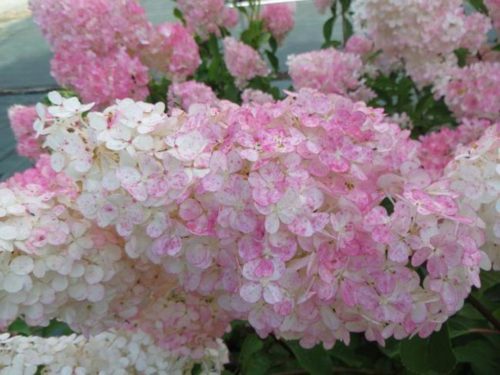
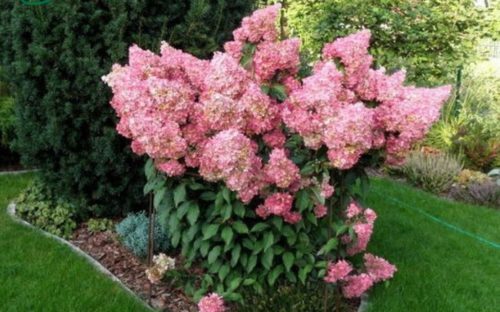
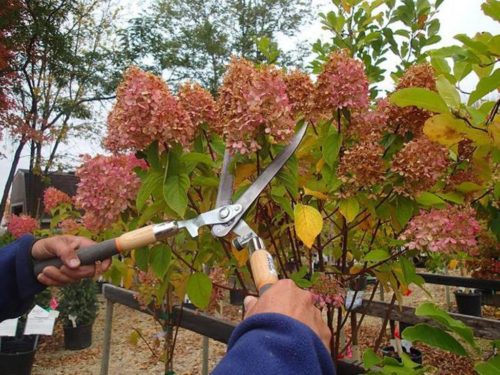
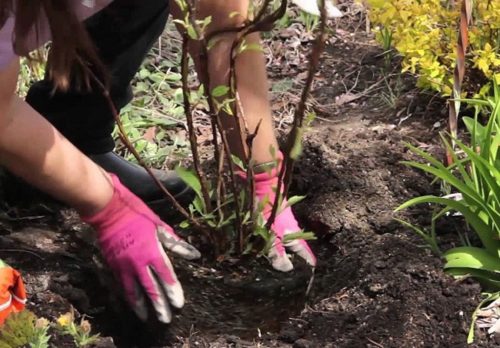
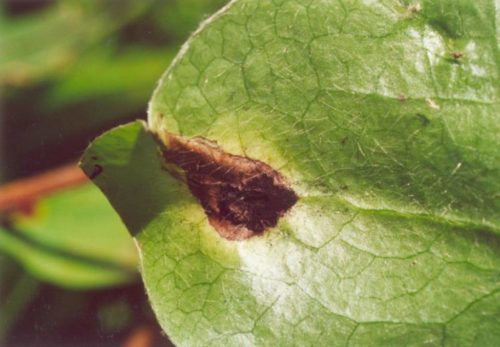
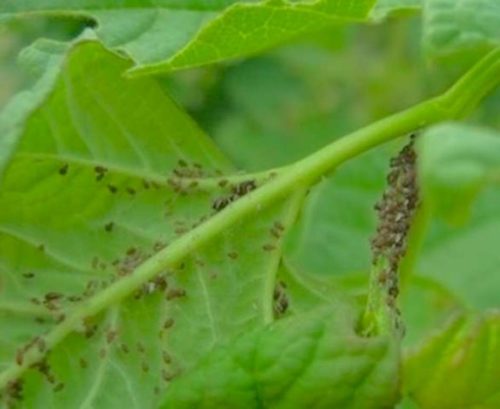

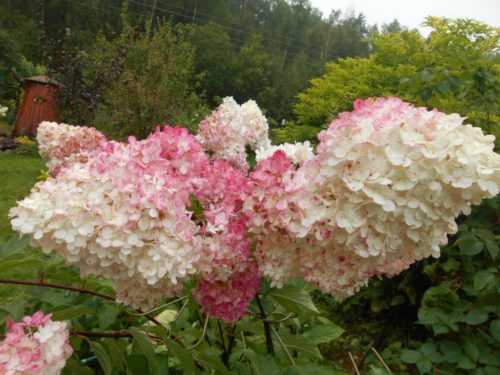
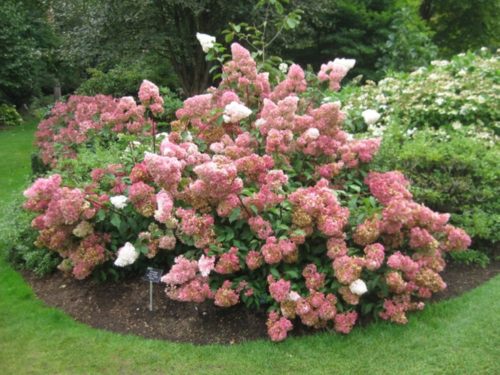
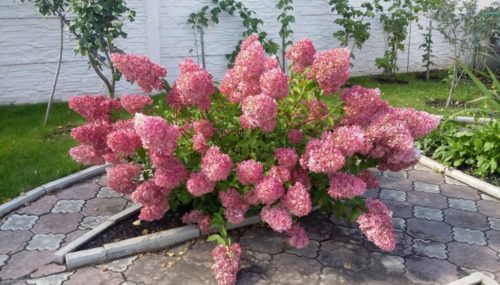
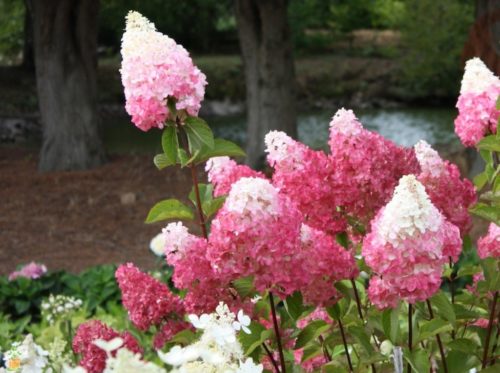
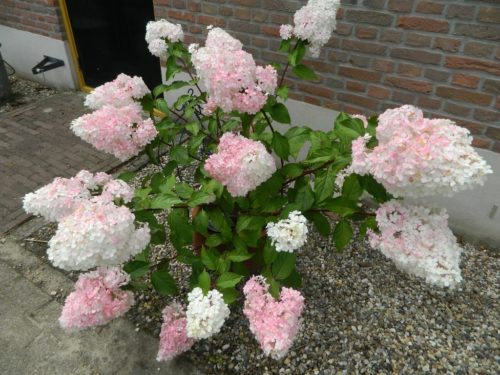












 Start a discussion ...
Start a discussion ...